There are over 190 nations in the world today. However, only two countries have flags that are exclusively red, white, and black. Let’s examine those two flags, plus a few other countries whose flags are mostly, but not completely, red, white, and black.
1. Trinidad and Tobago
The flag of Trinidad and Tobago features a field of red with a black diagonal stripe stretching from the top hoist side to the bottom fly side. The black stripe is outlined with a white edge.
Carlisle Chang designed this island nation’s flag. The Independence Committee selected it from other designers’ projects in 1962.
The three colors symbolize earth, water, and fire. The nation’s Ministry of Foreign and CARICOM Affairs also lists additional symbolism found in the flag’s three colors. Black is the color of strength, unity of purpose, and the wealth of the land. Red represents the nation’s people’s vitality, courage, and friendliness. White represents the purity of aspirations and the equality of all people.
Trinidad and Tobago is one of a very small handful of nations that feature a diagonal line on their flags. Other flags with a diagonal stripe design include Tanzania, Brunei, Namibia, and the Democratic Republic of the Congo.

Trinidad and Tobago’s flag is the only one in the world that features a diagonal design with exclusively red, white, and black colors.
©Momcilica/Shutterstock.com
Trinidad and Tobago Location, Population, and History
Officially known as the Republic of Trinidad and Tobago, this nation is the southernmost of all the Caribbean island nations. The country comprises the two main islands of Trinidad and Tobago, along with several much smaller islands. The nation is less than seven miles off Venezuela’s coast and about 81 miles south of Grenada. Port of Spain is the capital of Trinidad and Tobago, while San Fernando is the nation’s most populous city. The nation as a whole is home to over 1.5 million people.
Spain colonized the island nation after the arrival of Christopher Columbus. Before Columbus’ arrival, indigenous peoples had populated these islands for centuries. Spain ceded the islands to Britain in 1802. The islands remained under British control until they became an independent nation in 1962.
2. Yemen
Yemen’s flag features three equally-sized horizontal stripes of red, white, and black. The flag was adopted on May 22, 1990. Its design resulted from a combination of two separate flags.
In 1962, a revolution in northern Yemen led to the establishment of a new republic. The flag for North Yemen was patterned after the Arab Liberation Flag, a tricolor red, white, and black flag. Yemen added a green star in the center of its flag to differentiate it from the Arab Liberation Flag.
In 1967, another conflict erupted, which led to the establishment of the People’s Republic of South Yemen. This new republic’s flag was red, white, and black, with a red star inside a light blue triangle at the hoist.
In 1990, these two republics joined together as the Republic of Yemen. The process eliminated each distinguishing mark of the previous two flags, leading to the creation of Yemen’s current tricolor flag.
Each color of the flag is symbolic. Black represents the dark days of Yemen’s past. White represents a brighter future. Red stands for the blood from the conflicts of the past, which created the sovereign nation of Yemen.
Other nations that feature flags with three horizontal stripes of equal size include Armenia, Austria, Bulgaria, Germany, Hungary, the Netherlands, and Russia. Other national flags that feature three horizontal stripes but also add other insignia include Argentina, Croatia, El Salvador, Honduras, India, Nicaragua, and Serbia.
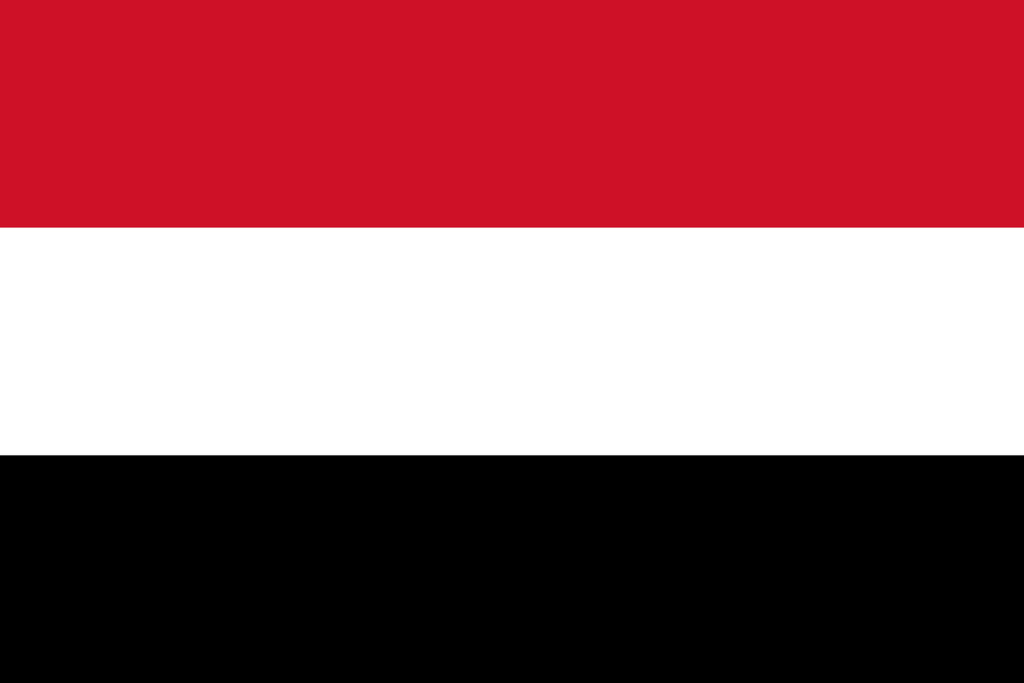
Yemen’s flag features equally sized horizontal red, white, and black stripes.
©iStock.com/Maksym Kapliuk
Yemen Location, Population, and History
This West Asian country is officially known as the Republic of Yemen. It is located on the southern end of the Arabian Peninsula. Yemen borders Saudi Arabia and Oman to the north, and shares maritime borders with Somalia, Djibouti, and Eritrea. The capital and most populous Yemeni city is Sanaa. With a population of over 34 million, Yemen is the sixth most populous of the Arab League nations.
As mentioned earlier, multiple revolutionary conflicts shaped the formation of Yemen. Today, the nation continues to be deeply entwined in conflict and violence. It holds the dubious distinction of being the second-most dangerous nation on earth, according to widespread recognition, trailing only Afghanistan.
Other Predominantly Red, White, and Black Flags
While Trinidad and Tobago and Yemen are the only two nations with flags that are exclusively red, white, and black, there are a few others where those are the predominant colors, but with a fourth color added.
Egypt
The flag of Egypt features three horizontal stripes of red, white, and black, with the Egyptian eagle of Saladin in gold featured in the center of the flag.
The flag’s colors all carry symbolic meaning. The red stands for the blood of Egyptians shed in the war against colonization. White stands for the people’s purity of heart. The black stripe is below the white one, symbolizing that darkness can be overcome. The eagle in the center of the flag is the Egyptian national symbol.

The Egyptian flag features a golden eagle in the center.
©H.studio/Shutterstock.com
Iraq
Iraq’s flag also features three equal stripes of red, white, and black. The phrase “الله أكبر” appears in green in the center of the flag, written in Arabic Kufic script. It translates as “God is the greatest.”
The flag takes its color scheme from the Arab Liberation Flag. However, defining the symbolism of these colors presents a challenge. Various interpretations exist, but none have gained universal acceptance.
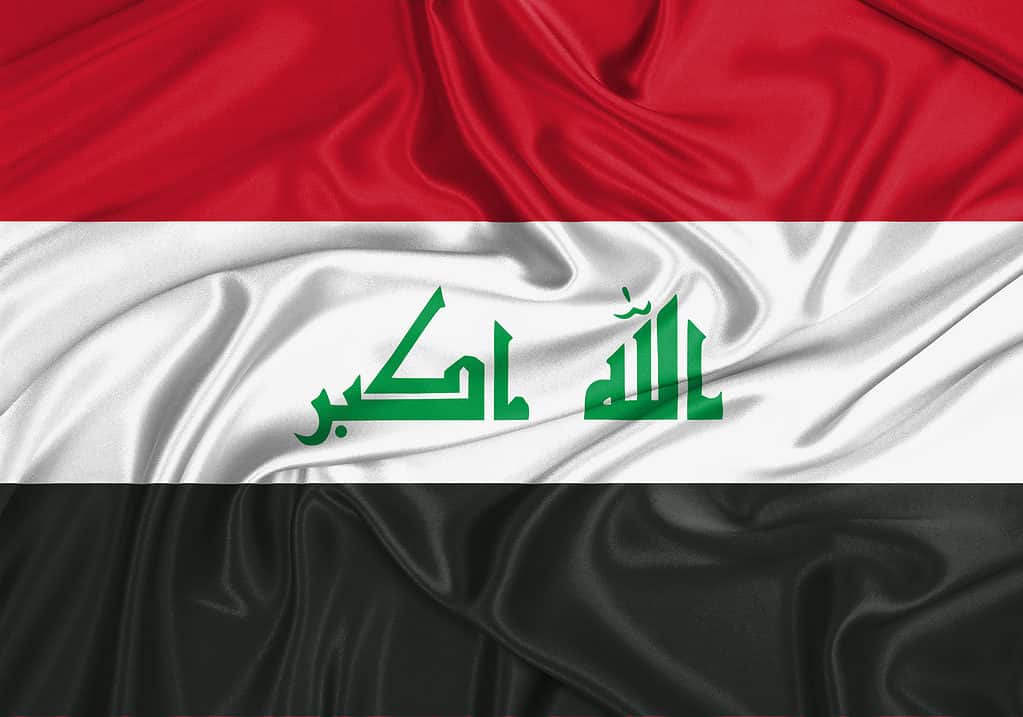
Iraq’s flag features a green Arabic script in the center.
©Hybrid Gfx/Shutterstock.com
Sudan
Sudan’s flag features horizontal stripes of red, white, and black, with a large green triangle at the hoist. Like several other Arab nations, the flag is patterned after the Arab Liberation Flag.
The red stripe on the Sudanese flag represents the nation’s struggle for independence and the sacrifices of the martyrs. White symbolizes optimism and light. Black represents the nation itself. In Arabic, “Sudan” means “land of the black people.” Green represents Islam, as well as agricultural prosperity.
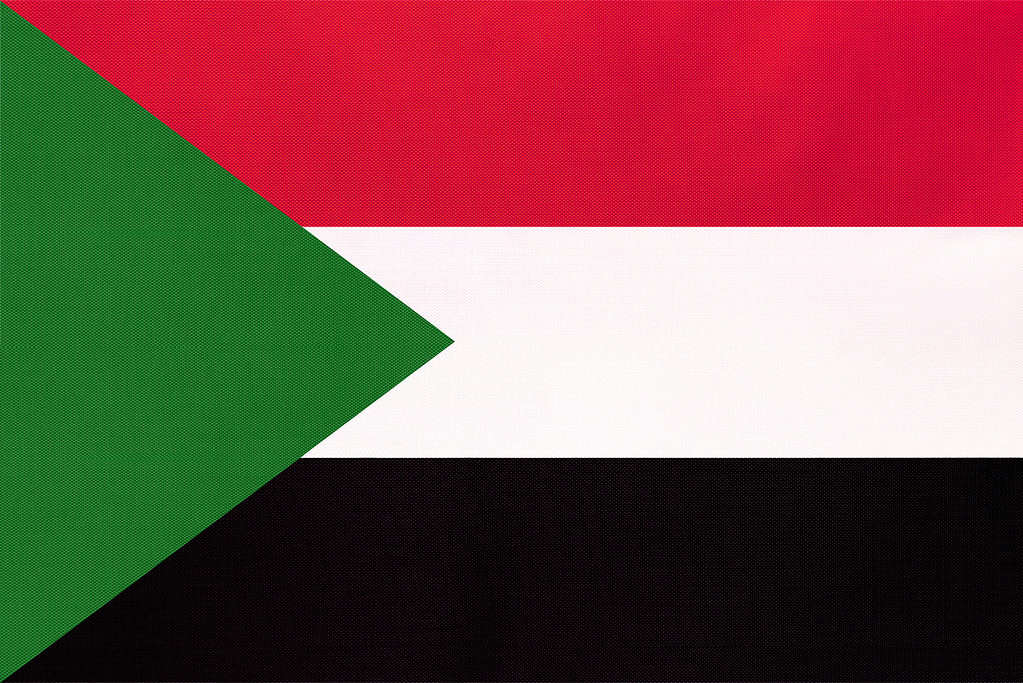
The Sudanese flag features a green triangle at the hoist.
©Anastasilia Guseva/Shutterstock.com
Syria
Syria’s flag features red, white, and black stripes with two green stars in the center. This is yet another flag patterned after the Arab Liberation flag. The colors of the Syrian flag represent different political dynasties of the past.

The Syrian flag displays three horizontal red, white, and black stripes, with two five-pointed green stars on the white stripe.
©iStock.com/bodrumsurf
Previous Red, White, and Black Flags
Several nations have used red, white, and black flags in the past but have since changed their flags’ colors and designs.
Georgia
The Democratic Republic of Georgia featured a red, white, and black flag from 1918-1921 and then again from 1991-2004. The flag displays a dark red field with black and white bands in the canton.
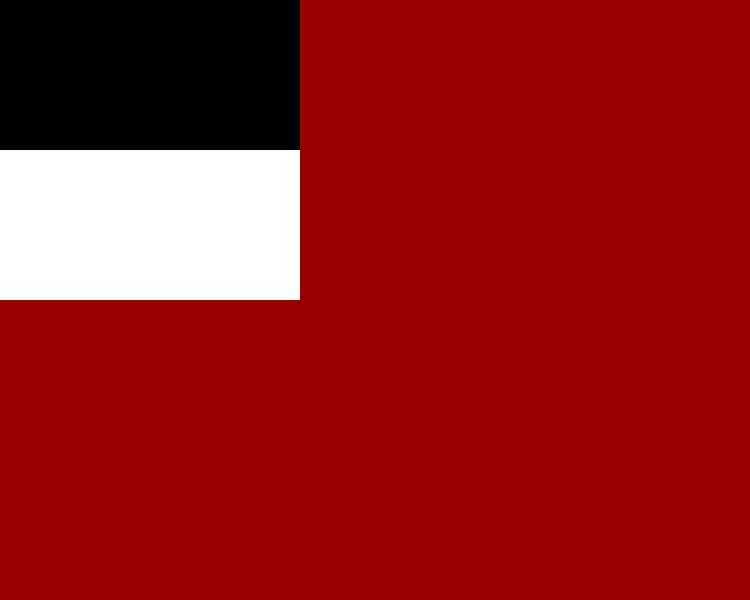
Georgia’s past flag featured a large field of dark red with a black and white canton.
©Vector version: Giorgi Balakhadze. Original: Iakob Nikoladze / CC BY-SA 4.0 – License
Germany
Officially known as the flag of the German Reich, the flag flown by Nazi Germany from 1935 until 1945 is perhaps the most infamous flag in history, and rightfully so. The flag featured a field of red with a white circle in the center. A black swastika features prominently inside the white circle.
According to Adolf Hitler, the red symbolized the social thought, and the white symbolized the national thought behind the Nazi movement. And according to Hitler, the black swastika was an emblem of the “Aryan race.”
Today, the flag is universally seen as a hate symbol representing white supremacy and anti-Semitism.

The national flag and merchant ensign of the German Reich is now rightfully viewed as a hate symbol.
©German government / Public domain – License
Maldives
The Maldives featured two different red, white, and black flags. One flew from 1903-1926, the other from 1926-1953.
The first flag featured a field of red with alternating white and black diagonal stripes along the hoist. The second was identical, except a white crescent moon that faced the hoist was added to the center of the flag. The crescent is a symbol of Islam.
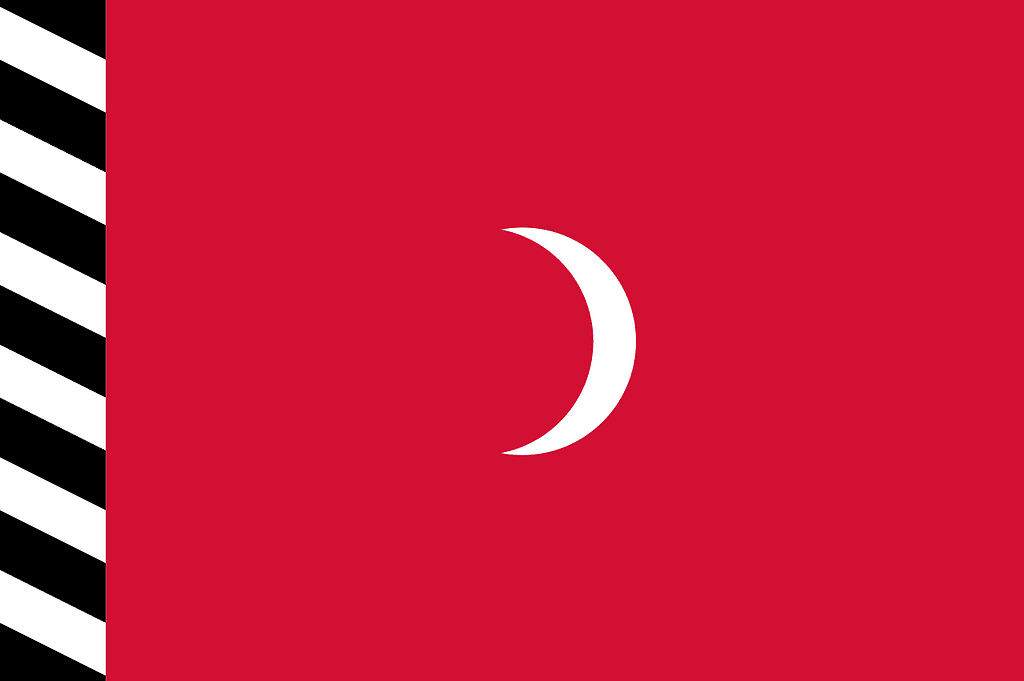
This red, white, and black flag flew over the Maldives until 1953.
©Old_National_Flag_of_the_Maldives.png: The original uploader was Orange Tuesday at English Wikipedia.(Original text: Orange Tuesday (talk))derivative work: Germo / Public domain – License
Others
Other states that briefly featured red, white, and black flags include Afghanistan and the Marshall Islands.
The photo featured at the top of this post is © Creative Photo Corner/Shutterstock.com
Thank you for reading! Have some feedback for us? Contact the AZ Animals editorial team.







